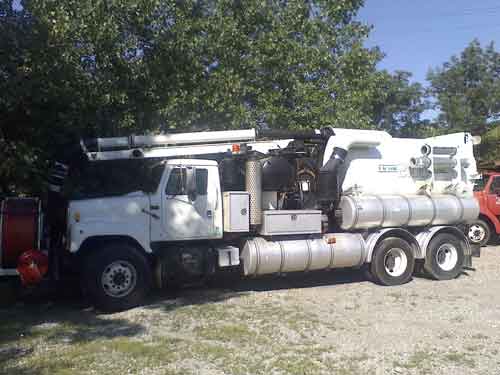Commercial Grease Trap Cleaning
Putting fats and grease down the drain disposes of them temporarily, but they accumulate over time and fill your commercial grease trap. Keeping a disposal system in good shape and functioning properly means that professional cleaning is a routine practice at least four times a year. Some factors that affect your need for grease trap cleaning include these:
• Size of your restaurant
• Number of guests that you serve
• Type of food preparation that you use
• Size and design of your grease trap
• Your local sewer regulations
Understanding the Importance of Regular Cleaning
A dire condition that your kitchen can experience is an overflow of your grease trap. The liquids that go into it are slippery and messy, but our vacuum trucks can handle them. The problem occurs when the water that you put down the drain cannot reach the sewer. A frequent cause for grease trap blockages is that fats congeal in the drain pipe. The water in your grease trap cools fats and congeals them when the system works properly, letting them fall to the bottom. When your grease trap is overloaded with waste, the solids can enter the effluent pipe and create problems in your kitchen.
A grease trap that receives infrequent cleaning can allow fats to enter the outflow pipe and block the necessary free flow of waste. If your trap is in good working order and you experience overflow, you may want to consider more frequent cleaning. Regular maintenance is an important key to having trouble free grease traps.
Finding Tips to Reduce Time between Cleanings
Your staff may not realize that certain practices contribute to the need for frequent trap cleaning. Educating them on recommended practices for disposing of grease and fat gives them an opportunity to help you and to learn something at the same time. Some helpful tips include these:
• Wipe down greasy pans with disposable towels
• Recycle food waste
• Reduce use of garbage disposal
• Recycle cooking oil
• Keep grease away from floor drains
Minimizing the amount of food, oils and fats that enter your system reduces the quantity that requires pumping. Dry wiping removes a substantial amount of grease that does not need pumping at a later time. Recycling is a popular way to create new purposes for used products, and it makes sense in your kitchen. Using a garbage disposal instead of a garbage can is a practice that is probably easy to correct when you suggest it to your kitchen staff. The small pieces of food that a disposal generates can fill your grease trap quickly, resulting in backups or in more frequent pump outs. Our vacuum trucks can clean your grease trap whenever you need it.

